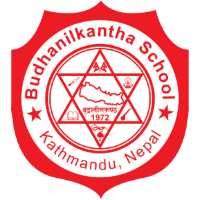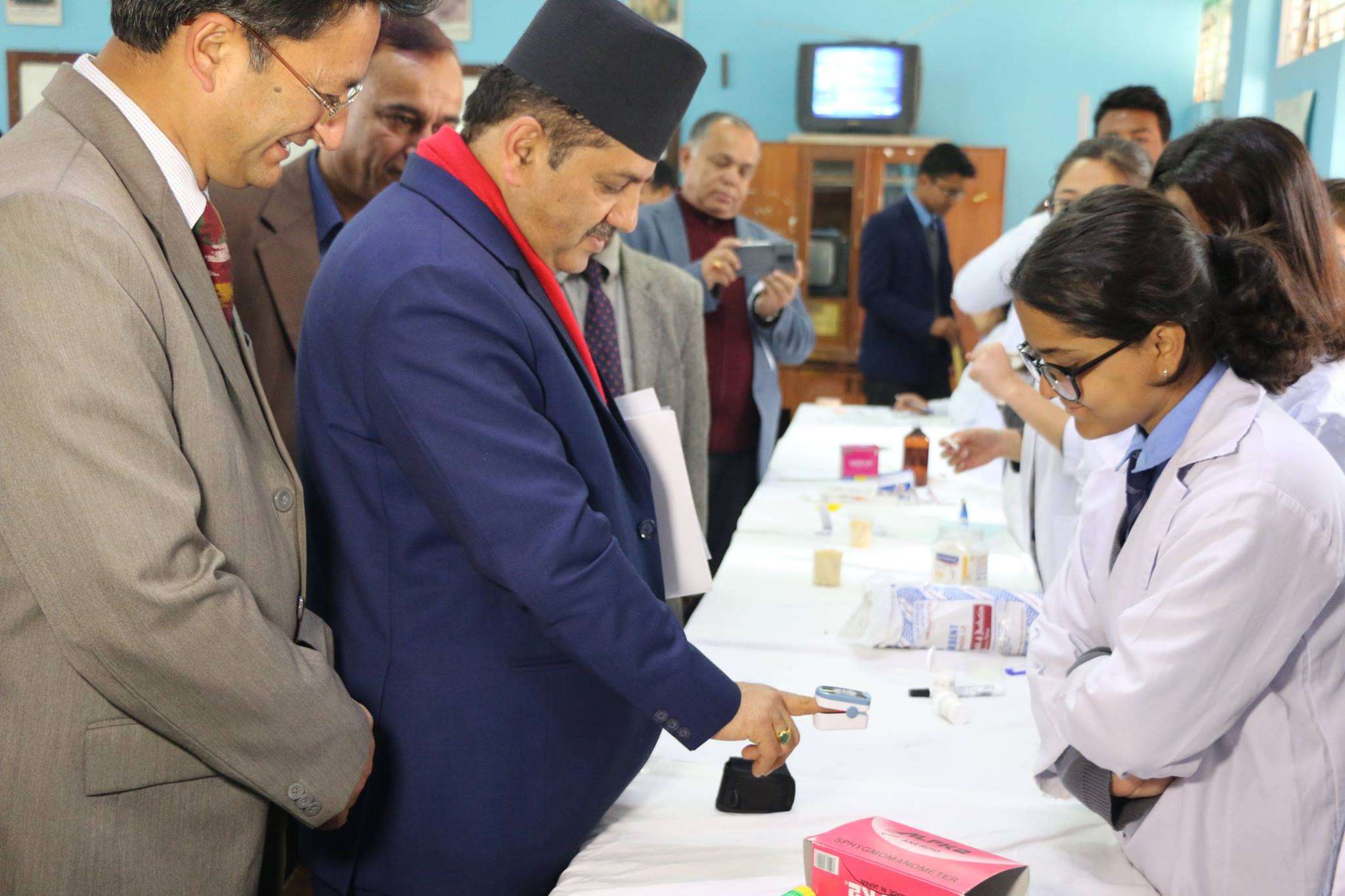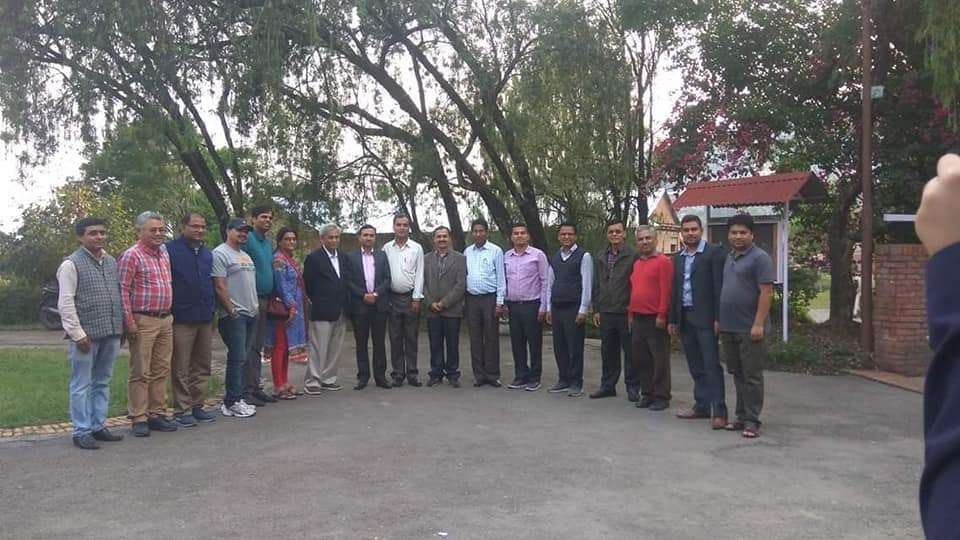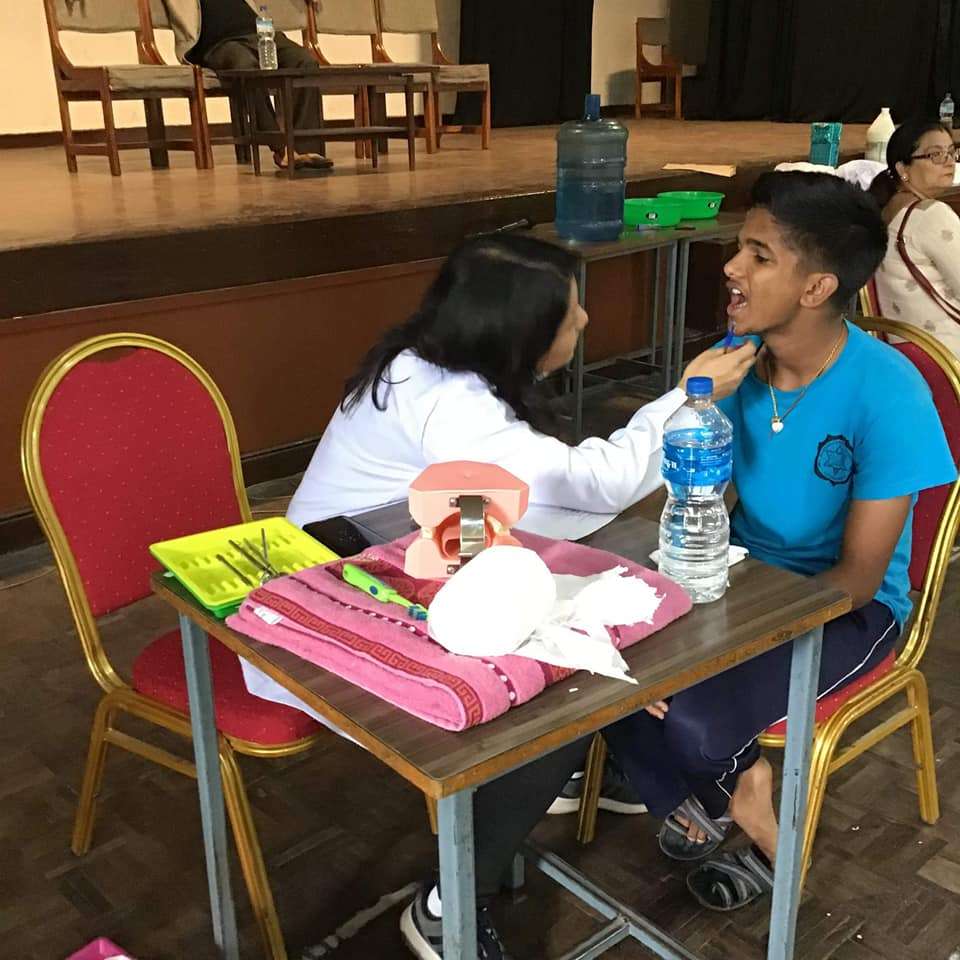

Budhanilkantha School
Budhanilkantha , Kathmandu
About Us
Nepal, the land of the legendary Yeti, the birthplace of Lord Buddha, and home to the highest mountain of the world – Mt. Everest, is one of the least developed countries in the world. Situated in Budhanilkantha Municipality, in the Kathmandu Valley, Budhanilkantha School (CEEB Code: 689070), is the government-designated National School of Nepal. It is a fully residential English medium school established in December 1972 with the joint cooperation of the Government of Nepal and the Government of the United Kingdom (UK).
In the first two decades of its operation, the school was headed by a succession of British Headmasters who did an excellent job of establishing and shaping the school into a “Center of Excellence”. The school was handed over to the Nepalese management in 1994, and since then it has continued to maintain the same high standards on all fronts. At present, the number of faculty is 81 and the support staff is 171 with a student-faculty ratio of almost 14:1.
The School is managed under the Public Trust, the main Trustee being the Ministry of Education. The Board of Trustees (BOT) and the School Management Committee (SMC) are chaired by the Education Secretary and the Joint Secretary respectively. Society of Ex Budhanilkantha Students (SEBS), the alumni association, and Friends of Budhanilkantha School (FOBS) are the two organizations that keenly take interest in the welfare of the school.
Currently, there are 1136 students, of which 42% are girls. Students are selected from a wide range of socio-economic, cultural, and ethnic backgrounds by the Ministry of Education, Nepal. Scholarships are provided to the meritorious and the needy ones from weak social, economic, and geographical backgrounds and all the seventy-seven districts of Nepal.
Admissions
The idea of establishing a model school that would provide quality all-round education to meritorious students coming from every walk of life in an environment that fosters unity in diversity was conceived in 1964. The idea was initiated by the Late King Mahendra in consultation with the then British Council representative, Lynndon Clough.
After much planning and forethought, Budhanilkantha School came into existence in 1972. As a joint venture between the Government of the United Kingdom and the Government of Nepal, the Nepali government provided the required land and the British government provided all the technical and financial assistance.
Teaching started in 1973 with one building, 82 students (all boys) and about a dozen teachers. The same building served as the hostel, the cafeteria and the classrooms. The construction of other buildings (hostels, classrooms, dinning hall, assembly hall, sports hall and staff quarters) was completed by the end of 1978. Peter J. Wakeman became the first Headmaster of Budhanilkantha School and Mr. Ratna Bahadur Tamot and Mr. Gehendra Man Udas were the first Nepali personel to be appointed as teachers.
Planning for school site
The first batch of students took the School Leaving Certificate Examination (the national exam that is taken at the end of class 10) in 1980. When 11 out of 14 students listed as the Top 10 position holders in the whole nation were from this school, Budhanilkantha School established itself as the icon of quality education. In 1983, English was made the official language of instruction at Budhanilkantha School and two years later the Cambridge University’s Ordinary-Level program was introduced. The introduction of Advanced Level of the same took place in 1986.
The major change came in 1991 when it was switched from ‘Boys only school’ to a co-educational institution. The first batch of girls (14 in number) was introduced into the system the same year. The addition of two hostels, one of which was inaugurated by the late Princes Diana, in 1992 facilitated the increase in the girls’ population.
In 1994, the British Management handed over the administration to Nepalese management. In the years that followed the country saw many political and economic turmoil that no doubt poised many new challenges to Budhanilkantha. But with the support of the government, the School Management Committee (SMC), teaching and administrative staff, students, parents and many other well-wishers, the school has been able to remain a true center of excellence.
The growth of the school has never stopped. In 1997, the 10+2 program of the Higher Secondary Education Board of Nepal was introduced. New subjects were introduced in the A-level too. The student population continued to rise till it reached near about a thousand in 1999. Addition of new hostels for the girls in 1999 raised the girls’ population to over 300. The Learning Resource Centre, completed and inaugurated in 2008, has added another feather to its cap.
Some of the key events in the history of Budhanilkantha School are:
- Established in 1972.
- Teaching started in 1973.
- The first batch of students took SLC in 1980.
- In 1983, the school became an English Medium School and a big adjustment in administrative management occurred.
- Construction of Gaurishanker House and New Science labs were completed in 1984.
- The Cambridge University’s O-Level program was introduced in 1985.
- A-Level Program of Cambridge University was introduced in 1986.
- Construction of swimming pool was completed in 1988.
- In 1991 Budhanilkantha School became a co-educational institution.
- Hiunchuli and Saipal House, two hostels for girls, were added in 1992.
- In 1994, the management was handed over to a Nepalese management team by the British government.
- In 1997, on the occasion of the school’s Silver Jubilee Year the school introduced 10+2 program of the Higher Secondary Education Board.
- Ratnachuli and Choyu House, new hostels for senior girls, were added in 1999.
- In 2008, the LRC (Learning Resource Centre) was completed and inaugurated by the first President of Nepal, H.E. Dr. Ram Baran Yadav.
- Class 4 was phased out and enrollment in class 5 started in 2009.
- The 5th House for girls, Tilicho House, was inaugurated by Rt. Honourable President Mrs. Bidya Bhandari on February 23, 2017.
- The 6th House for girls, Jugal House, was inaugurated by Honourable Deputy Prime Minister and Defence Minister Mr Ishwar Pokhrel on February 15, 2020.
- The New Classroom and Laboratory Block was also inaugurated by Honourable Deputy Prime Minister and Defence Minister Mr Ishwar Pokhrel on February 15, 2020.
The following personnel have taken the leadership in the growth and shaping of Budhanilkantha School.
- John B Tyson, Headmaster Designate (1966)
- Peter J Wakeman, Headmaster (1972 to 1977)
- Ken Jones, Headmaster (1978 to 1982)
- Dr. Tej Ratna Kansakar, Acting Headmaster (1983)
- John Tyson, Headmaster (1983 to 1988)
- Brian Garton, Headmaster (1989 to 1992)
- Thomas Thomas, Headmaster (1992 to 1994)
- Satyanarayan Rajbhandari, Principal (1994 to 1995)
- Narayan Prasad Sharma, Principal (1996 to 13 April 2013)
- Keshar Bahadur Khulal, Principal ( 14 April 2013 1 May 2019)
- Hom Nath Acharya, Principal ( 2 May 2019 to
Apply Now
Nepal, the land of the legendary Yeti, the birthplace of Lord Buddha, and home to the highest mountain of the world – Mt. Everest, is one of the least developed countries in the world. Situated in Budhanilkantha Municipality, in the Kathmandu Valley, Budhanilkantha School (CEEB Code: 689070), is the government-designated National School of Nepal. It is a fully residential English medium school established in December 1972 with the joint cooperation of the Government of Nepal and the Government of the United Kingdom (UK).
In the first two decades of its operation, the school was headed by a succession of British Headmasters who did an excellent job of establishing and shaping the school into a “Center of Excellence”. The school was handed over to the Nepalese management in 1994, and since then it has continued to maintain the same high standards on all fronts. At present, the number of faculty is 81 and the support staff is 171 with a student-faculty ratio of almost 14:1.
The School is managed under the Public Trust, the main Trustee being the Ministry of Education. The Board of Trustees (BOT) and the School Management Committee (SMC) are chaired by the Education Secretary and the Joint Secretary respectively. Society of Ex Budhanilkantha Students (SEBS), the alumni association, and Friends of Budhanilkantha School (FOBS) are the two organizations that keenly take interest in the welfare of the school.
Currently, there are 1136 students, of which 42% are girls. Students are selected from a wide range of socio-economic, cultural, and ethnic backgrounds by the Ministry of Education, Nepal. Scholarships are provided to the meritorious and the needy ones from weak social, economic, and geographical backgrounds and all the seventy-seven districts of Nepal.
Courses of Study at Budhanilkantha School:
- Budhanilkantha School follows the National Curriculum of Nepal from Grade 5 to 10. The main entrance of the students takes place in Grade 5. At the end of grade 10 the students sit for their Secondary Education Examination (SEE), which is conducted nationwide by the Ministry of Education, Office of the Controller of Examination, Nepal. The subjects offered in the SEE are Nepali, English, Compulsory Mathematics, Science, Social Studies, Health Population & Environment Education, Additional Mathematics or Geography, and Computer Science or Accounts & Office Management.
- After the SEE, selected students from inside as well as outside Budhanilkantha School can take either of the two courses:
- Grades 11 & 12 (Science) of National Education Board, Nepal: It is a two-year course in which students study English, Mathematics, Physics, and Chemistry as compulsory subjects; and Biology or Computer Science in grade 11, and Nepali, English, Physics and Chemistry as compulsory subjects in grade 12. They can choose between Biology and Mathematics at this level. NEB administers the final examinations at the end of grade 12 and awards the Secondary Education Examination (SEE) to students who pass (score at least Grade C) five subjects.
- General Certificate of Education (GCE) of Cambridge Assessment International Education (CAIE), the University of Cambridge, UK: This is also a two-year course. English Language (AS Level) and Mathematics are compulsory for all students. In addition, each student takes one from the following subject combinations:
i. Physics, Chemistry, and Biology (PCB) iv. Physics, Chemistry & Computer Science (PCC)
ii. Physics, Chemistry and Economics (PCE) v. Economics, Business and Accounting (EBA)
iii. Physics, Chemistry & Further Mathematics (PCF) vi. Economics, Business and Computer Science (EBC)
Apart from these officially offered combinations of subjects, students are free to appear privately in any one or more extra subjects on their own initiative. Some students may choose to do English General Paper (EGP) instead of English Language. To pass the Cambridge International A-Levels, students need to pass at least 3 A-Level subjects and AS Level English Language or English General Paper (EGP).
- Budhanilkantha School operates on a “Semester” system. In the first year, students sit for two school examinations: Mid-Year and Annual Examinations. In the second year, they sit for a semester examination (September), a Mid-year examination (January), and a Trial Examination (March). They then take up their Final Examinations conducted by Cambridge Assessment International Education of the University of Cambridge UK (for A-Level), and by NEB Nepal (for Grade 12) in May/June, and the results are published in August of the same year.
Leadership, Responsibilities, and Co-Curricular Program:
Budhanilkantha School aims to provide all-round education to its students through a wide range of sporting and numerous co-curricular activities such as drama and debating, community services, scouting, sports, and so on. Students are actively involved in organizing and participating in various activities in and outside the school. Students also hold various leadership positions in the areas defined below:
- Council of School Prefects: School Captain, Deputy School Captains, School Prefects
- Council of Academic Prefects: Academic Captain, Academic Prefects
- House Responsibilities: House Captain, Vice-captain, Sports Captain, House Prefects
- Club Responsibilities: President, Vice-president, Secretary, Treasurer, Executive Members
Counseling Service to College-bound Students:
In order to cater to the growing need of providing academic counseling services to college-bound students, the school has set up the Board of Counselors as under:
- Chairperson: Mr. Hom Nath Acharya - Principal
- Co-Chairperson: Mr. Deepak Prasad Kayastha - Vice Principal
- Guidance Counselors: Mr. Bijay Ram Maharjan and Mr. Chiranjivi Sharma Pandit
Most of our teachers who are also the recommenders for our students use g-mail with …..@bnks.edu.np so that official correspondence could be more authentic and reliable.
School website: www.bnks.edu.np
Hom Nath Acharya
Principal
Apply Now
Budhanilkantha School is managed under the Public Educational Trust. The main Trustee being the Ministry for Education, the Board of Trustees is chaired by the Education Secretary, Ministry of Education, Science and Technology of Nepal. The SEBS, FOBS and the Mayor of Budhanilkantha Municipality, too, have permanent representation in the Board of Trustees.
The list of current members of trustees is as follows:
Chairperson Mr. Ram Prasad Thapaliya, Education Secretary, Ministry of Education, Science & Technology
Member Mr. Laxmi Prasad Niraula, Joint-Secretary, Ministry of Finance
Member Mr. Uddhav Prasad Kharel, Mayor, Budhanilkantha Municipality
Member Prof. Dr. Bhupendra Kumar Basnet, Chairperson of FOBS
Member Mr. Prajesh Bikram Thapa, SEBS Representative
Memeber Mrs Kamla Bhist, Women Member
Member Secretary Mr. Hom Nath Acharya, Principal
Apply Now
The School Management Committee (SMC) is responsible for making, administering and monitoring the policies and programmes. SMC is chaired by the Joint Secretary, Ministry of Education, Science and Technology. The Ministry for Finance, SEBS, FOBS and teachers of Budhanilkantha School have permanent representation in the SMC.
The list of current members of the SMC is as under:
| 1 | Chairperson | Mr Deepak Sharma | Joint -Secretary, Ministry of Education, Science & Technology |
| 2 | Member | Mr Laxmi Prasad Niraula | Joint-Secretary, Ministry of Finance |
| 3 | Member | Mr Nanda Lal Paudel |
Chief, Education Dev. & Coordination Unit, Ktm |
| 4 | Member | Mr Mangesh Thapa | FOBS Representative |
| 5 | Member | Mr Rastra Bhusan Khadka | SEBS Representative |
| 6 | Member | Mr P N Bhusal | Teachers' Representative |
| 7 | Member | Ms Lily Thapa | Women Member |
| 8 | Member Secretary | Mr Hom Nath Acharya | Principal |
Apply Now
Admission FAQ
It is best to apply as soon as you know that ……….. is an option for you. While there is no deadline for applications, we have limited vacancies and we follow a first come first serve policy, so apply early for your best chance of being admitted.
We are open from grade …………..
Admission is given on the basis of an Entrance Examination which is mandatory, comprehensive, and has to be cleared on the basis of marks secured in the exam. A personal interview closely conducted by the School Management is compulsory for all students accompanied by their parents.
Forms can be collected from the school office or can be downloaded from our school website ……………. Completed forms can then either be handed in person in the school or email in …………………..
As part of the application approval process, all children have to participate in an age-appropriate entry assessment for basic math, languages (English and Nepali) and social interaction. This is needed to ensure a smooth and fully supported transition to the school and is by no means a “pass/fail” test. Parent interviews will also take place to ensure that their outlook towards education is in alignment with the school’s values and learning goals.
No. The school believes that every child should have a right to apply to KWS, and does not seek any form of monetary reimbursement for the process.
- A completed application form along with a latest Passport sized photograph.
- A Copy of student’s birth certificate
- Most recent Marks Sheet/Award/Certificate from the student’s previous or current school
Once the admission committee finalizes the entrance dates, you will receive a call and an email with the details.
The official admission process begins from 1st Chaitra every year but as the seats are limited, you will be able to reserve seats prior to the date once you are notified of your child’s selection.
Yes, our school offers varied scholarships to students on a need-cum-merit basis.
Scholarships are provided on the basis of merit as well as criteria set by NEB. Student candidates are required to appear in scholarship exams held by the school for which the school admission desk provides you with the dates and time of exam. Selection is transparent and fair and thus, it is mandatory to pass out the scholarship exams.
Our FAQ
Located at ........... near ......., our School is served by regular & quick public transport – buses, micro-vans, and tempos.
Admission is given on the basis of an Entrance Examination which is mandatory, comprehensive, and has to be cleared or on the basis of previous grades. A personal interview closely conducted by the School Management is compulsory for all students accompanied by their parents.
Yes, our school offers varied scholarships to students on a need-cum-merit basis.
Some of our co-curricular activities include debating, elocution, essay writing, painting, drama, project, and excursions.
we have most of the sports facilities for our students.
Our Library is full of text-books, reference books/encyclopedias, and journals/ newspapers/magazines to keep the students well-informed. We have transportation facility as well.



